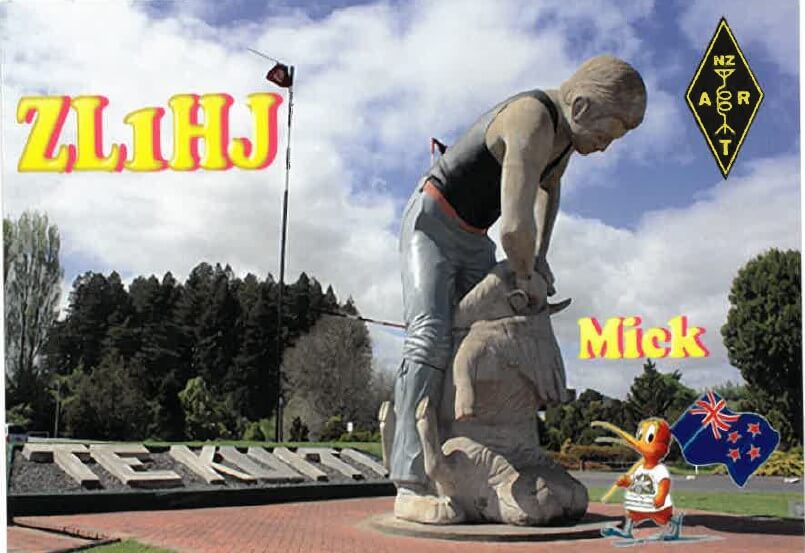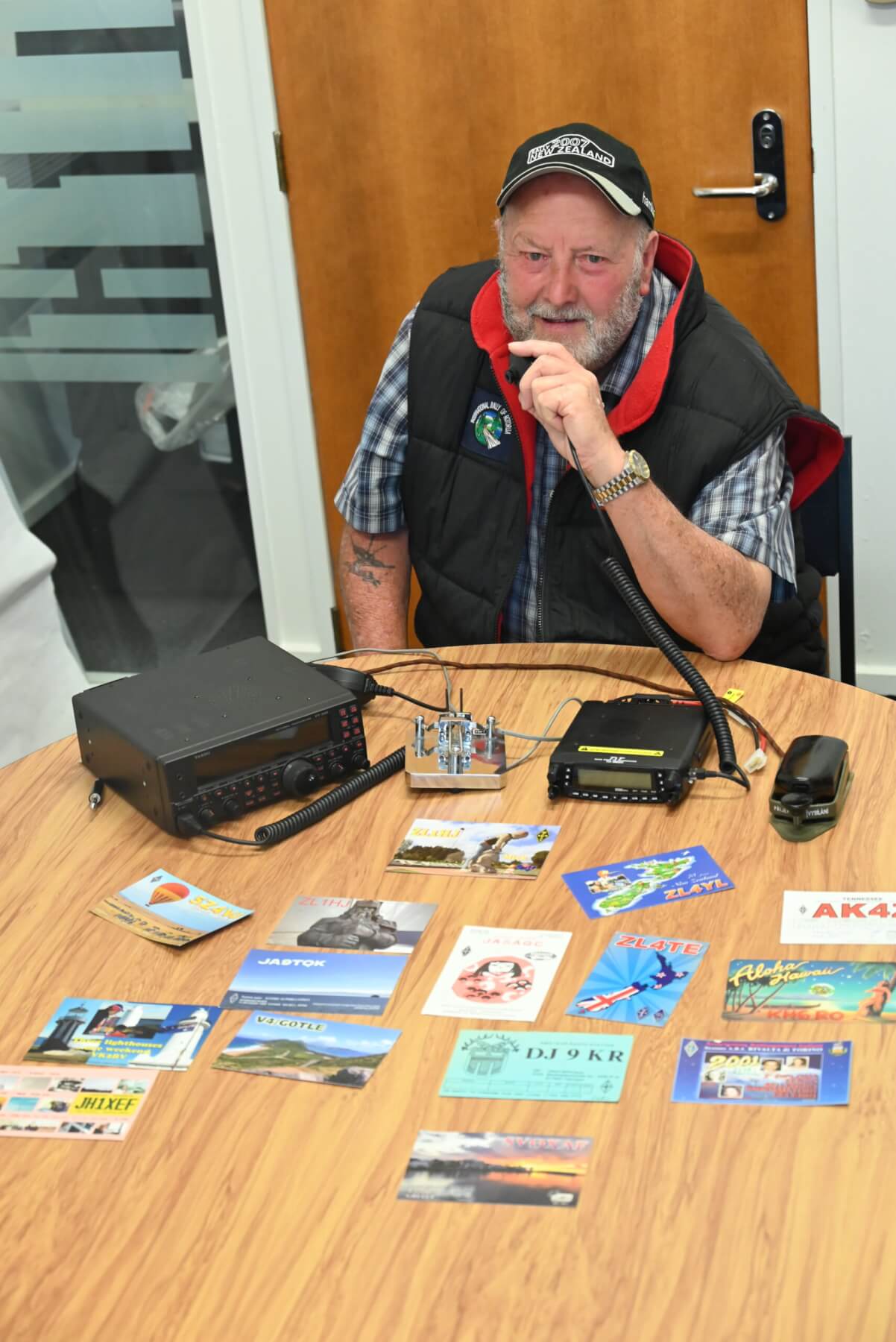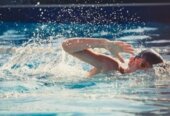“Before there was social media there was amateur, or ham radio, and it’s going to exist long after social media is just a memory.”
That’s the view of longtime Te Kūiti radio ham Mick Gannon, one of 11 members in the Waitomo branch of the NZ Association of Radio Transmitters.

Cards carrying the image of the Te Kūiti sharing statue have been sent to ham radio enthusiasts all over the world.
Gannon’s group, who live in Te Kūiti, Ōtorohanga and Te Awamutu, stay in touch with fellow shortwave enthusiasts across New Zealand and around the world.
Gannon says in an emergency this form of communication can provide a viable alternative to the telephone network, whose cellphone towers could be wiped out by a weather event, or earthquake. The same would apply if the Internet was deliberately crashed by military activity.
If the national power grid was ever damaged, taking out cellphone towers, shortwave communications could be more resilient.
Gannon said smaller short wave sets use negligable amounts of electricity, some being powered by the likes of AA batteries or 12 volt car batteries.
“That means the network of current ham radio operators would still be in business following even catastrophic damage to the power grid.
Amateur radio operators assist with the running of car rallies held in areas with little or no cellphone coverage.
“And one of the reasons for this is that we are maintaining skills which may potentially be called upon in a civil emergency.”
Recently amateur radio had suffered the effects of heightened solar flares, which can make conversations fade out.
These were expected to diminish in coming months as the sun passed the peak of an 11-year-cycle in which activity waxed and waned.
Another factor which affected the ability of ham radio operators to communcate over vast distances was the so-called “greyline”.
This is a period of time at dusk or sunrise, lasting a few hours a day and it allowed radio waves to travel further than they otherwise might. As the Earth rotates the greyline moved, hence much of Gannon’s ham radio operation activity revolved around relatively short-lived greyline periods of the day.
Gannon has sent his OSL (ham operator’s identity) card, which depicts Te Kūiti’s giant shearer, to ham radio enthusiasts befriended worldwide.
He has stayed at the UK homes of friends made over the airwaves, and some have travelled to New Zealand have stayed with him and his wife, Rita.
He came into amateur radio after dabbling with CB radio back in the 1960s, then deciding there had to be something better. There was.
“One of the guys showed us the VF high frequency radio in his car and started talking to a person in Australia, then another called in and he was in Spain. I was hooked.”
In that era Gammon had to learn Morse Code to gain his amateur radio licence, though this is no longer necessary.
He said today’s equivalent qualification is relatively easy to obtain, and anyone interested would receive plenty of help and encouragment from groups like the one in Waitomo.
“It opened up a new life for me. Within one year I was getting to know people in England, Ireland, Scotland and Wales. Also, in America, Spain, Italy, Portugal, Greece, Russia, South Africa and Mozambique.
“I was speaking to people all round the Pacific Rim, even in Antarctica. After just a year I had worked 96 countries, which is good going for any amateur.”

Mick Gannon with some of the ham operators’ tools of the trade. He is pictured with a couple of smaller radio sets, morse keys and OSL cards exchanged aby amateur radio operators around the world.








